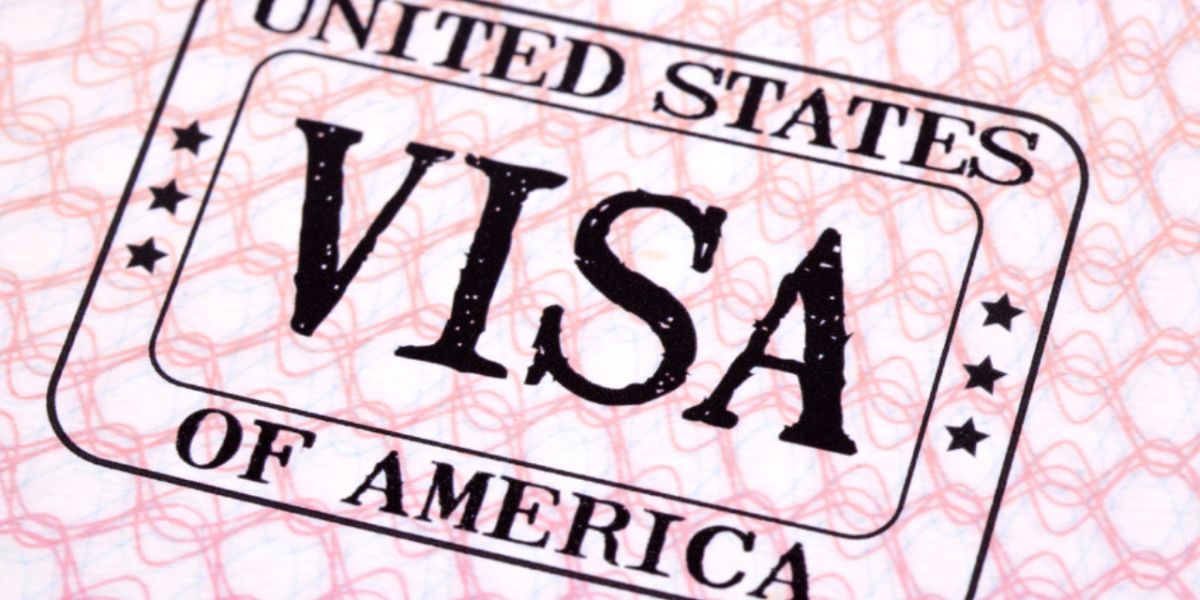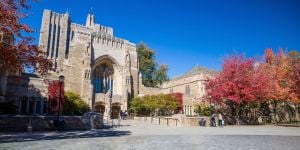
If you're moving to the United States for work, study, or to accompany a family member or spouse, it's important to be aware of the different types of work visas available and to begin the application process well in advance of your travel date. Although the visitor visa process is relatively straightforward, if you are looking to be in the US more permanently, it's important to have a solid understanding of all of the alternative visa options.
Immigrants have always played a major role in the U.S. workforce. According to recent studies, they are significantly more likely to start new businesses than US-born citizens, and nearly half of all Fortune 500 companies were founded by immigrants or their children. Because of this, the US. visa system includes several pathways not only for skilled workers and employees but also for entrepreneurs and investors seeking to establish businesses in the country.
Visitors for less than 90 days can find visitor visa information here, and those interested in the procedures for a Permanent Residence Card (Green Card) can check out the relevant article.
Categories of visas in the US
All visa categories are separated into two main types: non-immigrant and immigrant visas. The type of visa you should apply for is determined by the purpose of your travel to the USA.
Non-immigrant visa categories are for those who have permanent residence outside of the USA but intend to reside in the USA temporarily. These are issued to individuals for business, work (skilled and unskilled), students, those in transit to other countries, journalists, and spouses of permanent residents. In order to be approved, you'll need to demonstrate that you intend to return to your home country and that you have the financial means to support yourself while in the US. Currently, the requirement to demonstrate strong ties to your home country has become more rigorous, potentially increasing the risk of denials for non-immigrant visas.
Immigrant visas are issued to those wanting to live permanently in the US. These visas are primarily granted to those with immediate family or who have certain other familial relationships with people who are currently permanent residents. Others are granted through employment sponsorships or for religious workers.
Immigrant work visas in the US
Immigrant work visas mean that the person/persons coming to the US have permission to work and intend to become permanent residents in the US. There are several types of Green Cards granted for employment reasons. Every fiscal year (October 1st–September 30th), approximately 140,000 employment-based immigrant visas are made available. Currently, this figure remains the standard allocation despite the increased scrutiny on immigration in the US. Although he Trump Administration have tightened immigration enforcement, increased vetting of immigrants, and restricted certain humanitarian programs, these changes have not actually altered the annual cap for employment-based visas
Currently, the employment-based green card process shows some forward movement for EB-2 and EB-3 applicants from most countries, including China. However, India continues to face backlogs in both EB-2 and EB-3 categories and many Indians are still waiting for priority dates from over a decade ago. For the EB-1 category, most countries are “current,” meaning applicants can proceed with no backlog, but India and China still face delays due to high demand. To check if it's your turn, consult the U.S. Department of State's monthly Visa Bulletin using your priority date.
For full details and information on how to apply, it is important to always check the USCIS employment visa page for the most up-to-date information.
EB-1: Priority workers
These types of visas are further subdivided into three categories:
- EB-1A visas are reserved for persons of extraordinary ability;
- EB-1B visas are meant for outstanding professors and researchers;
- EB-1C visas are granted to multinational executives and managers.
In most cases, a US employer will first need to extend a permanent offer of employment and file a petition. However, with the EB-1A visa, self-sponsorship is also an option.
For entrepreneurs and startup founders, the EB-1A (extraordinary ability) visa can sometimes be used if they can prove their business achievements meet “extraordinary ability” criteria. Applicants must meet at least three of the USCIS criteria—for example, major awards, published material, memberships in associations, or original contributions of significance. Entrepreneurial achievements such as funding, patents, or media coverage may strengthen an application but are assessed subjectively rather than by a formal points system.
EB-2: Advanced degree or exceptional ability
EB-2 category visas are granted to those with advanced degrees or foreign nationals with exceptional abilities in the fields of arts, science, or business. The National Interest Waiver (NIW) under EB-2 can also apply to entrepreneurs if they can demonstrate that their work benefits the U.S. national interest. The EB-2 NIW is designed for professionals of exceptional ability or those with advanced degrees. Typically, these types of visas require an approved individual labor certification from the Department of Labor. However, some foreign nationals may qualify for National Interest Waiver. These waivers are granted to persons of exceptional ability who will be of great benefit to the nation.
EB-3: Professionals, skilled, and unskilled workers
These visas are offered to different categories of workers. This includes skilled workers with at least two years of experience/training, professionals with college degrees, and workers for unskilled labor that is not temporary/seasonal. Typically, the set of requirements for EB-3 visas is not as strict as with other EB-type visas — however, there is a longer backlog.
Almost all EB-3 and most EB-2 visas require a full-time job offer from a U.S. employer and approval of labour certification (PERM). The certification verifies that there are no sufficient U.S. workers capable of filling the position and that hiring the foreign worker will not negatively impact the U.S. labour market.
The EB-5 Immigrant Investor Program grants a conditional Green Card to investors who invest in a new commercial enterprise that creates or preserves at least ten full-time jobs for qualifying U.S. workers. Typical minimum investments are USD 1.05 million, or USD 800,000 in a Targeted Employment Area (TEA). After meeting the job-creation requirements, investors and their families can apply for permanent residency.
Non-immigrant work-related visas in the USA
Non-immigrant visas grant temporary authorization for work and are not directly related to obtaining permanent residency. Foreign nationals who come to the US on a non-immigrant visa are restricted in their activity to the purpose for which they were allowed entry. Once their authorized stay expires, they will need to depart from the United States.
Processing times for many work visa categories have remained 30–40% longer than pre-2020 averages, and rejection rates have stabilised around 20–25%, according to USCIS data. Early preparation and accurate documentation remain strongly recommended.
These visas cater to various professional backgrounds and specific needs. From the H-1B visa for skilled workers in specialty occupations to the L-1 visa for intracompany transfers and the O-1 visa for individuals with extraordinary abilities, each non-immigrant work visa serves a distinct purpose.
E-1/E-2 Visas: Treaty trader or treaty investor
E-1 visas let foreign nationals of specific countries enter the US for the purpose of international trade. E2 visas apply to individuals who come from countries that maintain a trade treaty with the US and are visiting the country for investment purposes.
There is no official minimum investment, but the funds must be substantial, irrevocably committed, and “at risk.”
Applicants must gather supporting documentation, complete Form DS-160 , pay the fee, schedule an interview, and present a business plan and investment evidence.
The E-2 is especially popular among entrepreneurs who wish to establish and operate a business in the United States. While renewable indefinitely, it does not itself lead to permanent residency. As of late 2025, all E-1/E-2 and similar applicants must submit digital evidence at least 72 hours in advance of their interview, with no exceptions for late submissions.
H-1B visa: Professional workers in a specialty occupation
H-1B visas are the most in-demand work visas in the US. In order to obtain an H-1B visa, the applicant must have an offer of employment from a US employer and they must be in possession of the necessary qualifications. In most cases, this presupposes a bachelor's degree (or higher) and working experience in your field.
On the employer's side, they will need to sponsor your work visa by filing an I-129 petition with USCIS as well as submitting a labor condition application.
Good to know:
In late 2025 there is a proposal to introduce a $100,000 fee per petition for new and extension H-1B cases, which would significantly increase costs for employers. This has not yet been signed into law and standard fees remain.
The H-1B process is now fully digital and all forms must be completed with the utmost care and precision. Be aware that the barcode on Form DS-160 must exactly match the one used to schedule the visa interview. Any mismatch will result in your application being denied with no refund of the visa fee.
H-1B visas are tied to a specific employer — this means that H-1B visa holders are generally not allowed to switch employers. The visa can generally be extended for up to 6 years.
Note that a limited number of H-1B visas are issued each year, and the application process can be rather complex. This is why a lot of US companies looking to hire from abroad often use immigration law firms to guide them through the proceedings.
L-1 Visa: Temporary Intra/Intra Company Transferee
The L-1 work visa is meant for employees who have transferred from a foreign branch to the US. They may be sent to an existing U.S. branch or to help open a new one. This visa is not just for large multinational corporations — it can also be used by small or mid-sized businesses looking to expand into the U.S.
There are two types of L-1 visas: L-1A is for executives and managers, and L-1B is for employees with specialized knowledge.
To qualify, the employee must have worked for the overseas company for at least one year within the past three years. L-1 visas are initially granted for up to 3 years and can be extended (up to 7 years for L-1A and 5 years for L-1B).
Digital application and advance evidence submission (at least 72 hours before interview) are now strictly required.
O-1 Visa: Aliens of Extraordinary Ability
O-1 visas are for individuals with extraordinary ability or achievement. O-1A is for those in sciences, education, business, or athletics. O-1B is for those in the arts or entertainment industry, including film and television. The O-1A visa does not have a cap, salary minimum, or limit on extensions and premium processing is available – for a fee. O-1 visa holders can initially stay in the US for up to 3 years, with the possibility of extensions.
The O-1 is sometimes referred to as the “Einstein” or “rockstar” visa and is also available to business founders who can demonstrate exceptional achievements. It is a temporary visa that can initially last for up to three years and may be extended. Unlike the EB-1, it does not itself lead to permanent residency.
The International Entrepreneur Rule (IER)
The International Entrepreneur Rule (IER) allows foreign entrepreneurs to live and work in the U.S. temporarily to build and grow start-ups that demonstrate strong potential for innovation, job creation, and investment. It is not a visa but a parole-based system managed by the Department of Homeland Security. To qualify, applicants must show substantial ownership, a leadership role, and proof of significant funding or growth potential. Successful applicants may be granted permission to stay for up to 30 months of stay with the possibility of a single renewal for another 30 months, creating a maximum total of up to five years. Because the IER has undergone several changes since its introduction in 2017, entrepreneurs should check current USCIS guidance before applying.
Other visa options
There are other types of US work visas issued to people from specific countries and in specific fields of work:
- P visas are meant for athletes, entertainers, and artists;
- R visas are issued to temporary religious workers who want to practice their beliefs in the United States;
- TN/TD visas are for citizens of Canada and Mexico who work for NAFTA;
- E3 visas are issued to Australian nationals who come to the US to work in specialized fields;
- I visas are issued to journalists who come to the US to take part in media activities.
Important:
Some visa regulations are currently subject to regular changes and revisions. Additionally, visa approval for certain countries is experiencing delays and holds. If you're unsure whether you will be affected, it is advisable to consult the consular or embassy in your country.
Visa application process in the US and required documents
The visa application process and documentation varies for each type of visa and also depends on the location where you submit the application. Begin by doing your research online and consult the USCIS to get an understanding of the exact steps required to obtain your visa. Obtaining a visa generally requires a visit to a US embassy or consulate in your resident country.
Overall, the process consists of providing needed documents and applications, paying a fee, and attending an interview. All applicants are required to provide a passport valid for at least 6 months beyond the period of stay, a photo (make sure to use US standards), and proof that the associated visa fees have been paid. During your interview appointment, digital fingerprints and a photo will be taken. Occasionally, a medical examination or additional documents may be required. After these requirements are met, you will be advised whether or not your visa has been approved and the next steps for collecting your visa/passport. Due to longer wait times and new submission rules, applicants are strongly advised to apply early and ensure all digital uploads meet new 72-hour deadlines.
Be prepared for long wait times and always apply well in advance for any kind of visa. The visa application process can be complicated, and it's important to request any documents you need early and ensure you have all of your ducks in a row before you begin. Fill out all forms carefully and double-check them before you mail them off. Mistakes like writing the date in a different format can lead to beginning the process all over again.
You must depart the United States on or before the date indicated on your admission stamp or I-94 form unless your request to extend your stay is approved by USCIS. If not, you risk deportation and difficulty reapplying for a visa in the future.
Important changes to be aware of
As of April 2025, new visa application rules require that the barcode on Form DS-160 must exactly match the one used to schedule the visa interview. A mismatch will result in denial and the need to reapply.
All supporting documents, such as your financials and eligibility evidence, must be uploaded digitally at least 72 hours before the interview. No edits can be made within this window, and additional physical documents will not be accepted at the interview.
Applicants must now provide two years of travel history and five years of social media accounts.
Due to these changes and increased vetting, application processing times have increased by 30–40%, and denial rates have risen by 20–25%. Applicants should prepare carefully and submit all forms and documents with meticulous accuracy.
Student visas to the US
Anyone wishing to study in the US must have a student visa. The type of school and course of study will determine whether you need an F-1 or M-1 visa. F-1 type visas are for students of academic programs like universities and primary, secondary, and language schools. M-1 type visas are for all other vocational and non-academic institutions.
Before you can submit the application for an M or F-category visa, you must show proof that you've been accepted to an approved school. You will be enrolled in the Student and Exchange Visitor Information System (SEVIS), which requires a fee.
The school will provide a Form I-20, which you will present at your visa interview. Spouses and children of international students may accompany them by submitting their own Form I-20.
Be aware, denial rates for student visas have increased slightly in 2025, ranging from 12–24% depending on nationality, security risk status, and the quality of documents supplied.
Other visa US types
There are roughly 185 types of visas issued by the United States. For more information about these, read our article titled all types of visas offered by the US. You should also contact the US embassy or consulate in your country of residence or speak with an immigration attorney to get more information on your specific case.
Useful links:
List of US embassies and consulates abroad
We do our best to provide accurate and up to date information. However, if you have noticed any inaccuracies in this article, please let us know in the comments section below.








